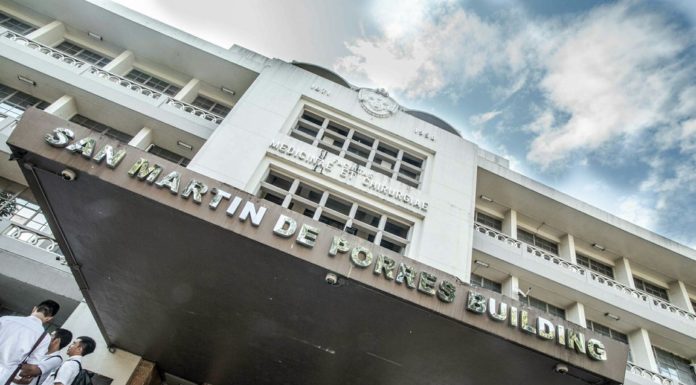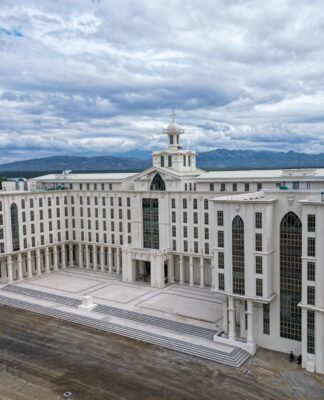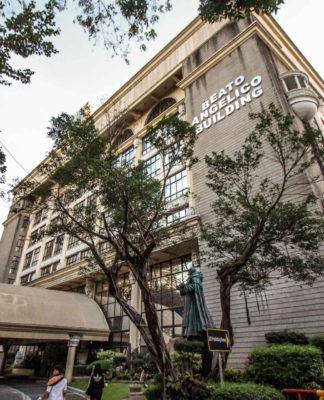Last Feb. 12, was the most formal breakfast I had ever had. It was in Malacañang and our host was the President, the No. 1 Balikatan lover.
The breakfast was composed of garlic rice, scrambled eggs with Vigan longganisa and daing na bangus, fruits, orange juice, and coffee.
The breakfast meeting was part of the government’s 40-day commemoration of the “ triumph in EDSA.”
Some of the topics that we seriously discussed were the Balikatan exercises and the presence of American soldiers in the country; the improving economy and the increasing confidence of foreign investors in our market (that’s what she claimed); the too much politicking and bickering in her government; the agriculture sector; the education sector; Bush and the Abu Sayaff (including the tape of the beheading activities of the group); Mark Chua and the ROTC; and the proliferation of watering holes, billiard halls, motels which resulted in the fast decay of Manila’s University Belt.
At one point, she raised her voice and almost lost her temper, like a mother scolding her children, when a fellow student challenged her ultra controversial “Abu Sayaff lovers” statement. But Press Secretary Rigoberto Tiglao was quick to control the situation and clear things out.
At that time, my stand on the Balikatan issue was still unclear. And no matter how I wanted to challenge or question the President’s views, I could not because of something I could not explain. In short, I was struck by her presence.
Regarding the country’s education system, she admitted that we still have a lot of things to improve and rethink; that we must uphold education as a right and not as a privilege.
During the meeting, she related the story of her parent’s love affair, which started when her mother, Eva Macapagal, who was then studying at the Faculty of Medicine and Surgery read the Varsitarian’s story on bar topnotcher, Diosdado Macapagal. The rest was history, according to her.
The meeting ended with the President’s assurance that meetings and consultations like that would be held more often, if not regularly. Actually, that’s not what I am hoping for. I am expecting her to take action on all the things that we had discussed like the increase in the budget for education, the realignment of the government’s priorities, the creation of more realistic and feasible job opportunities, and the assurance that she would be the leading protector of the Filipino people.
I was one of those youths who trooped to EDSA to bring down former president Estrada, which brought her to power. However indirect, I still can claim that I made her president. With that, she should not fail my expectations and in general, of the Filipinos who directly and indirectly contributed to her rise. I’m sure I’m not alone when that time comes, when I have to decide to go back to EDSA and reclaim whatever is lost and to make whatever is unfulfilled a reality.
16 years ago, I was only five. 16 years ago was the first EDSA People Power revolt. 16 years ago was the first time I saw tanks and soldiers firing at close range. 16 years ago me and my family prayed the rosary the whole day. 16 years ago was my first brush with a revolution, a peaceful revolt that is. 16 years ago, I busted my father’s radio when I excessively turned the tuner while in search of Bombo Radyo.
While most of the children at that age were clueless of the EDSA Revolution, I together with my two brothers and some cousins knew what was happening outside our compound..
Our house was, and still is, in Timog, just a few blocks away from the old Channel 4 station and the ABS-CBN Channel 2 complex. Our place was also a few blocks away from the intersection of Timog, Quezon Avenue, and West Avenue, near the old Circle Theater, where most of the military tanks were parked and where soldiers were barricaded. At the same time, EDSA was also a few blocks away eastward, where the throng of people shouted “Tama na! Sobra na! Palitan na!”
In that four-day revolution, I can still remember how my father kept us inside the house to protect us from stray bullets. I saw from a small seam in our window, soldiers on top of the nearby building firing their guns. I saw soldiers climbing the orange network transmitter towers. There was no television then, not until the fourth day, when Maan Hontivero’s group managed to take-over the station.
I was lucky to have participated in the two People Power revolts—indirectly and directly. The first episode (1986) was a mix of horror and jubilation while the second (2001) was an orgy of extreme abhorrence to Estrada, a unique sense of nationalism, and the realization of the youth’s emerging role.
My memories of both EDSA People Power revolts were quite poignant and it contributed to the molding of the character in me.


















